Kingdom Plantae Higher classification Mirabilis | Genus Mirabilis Rank Species | |
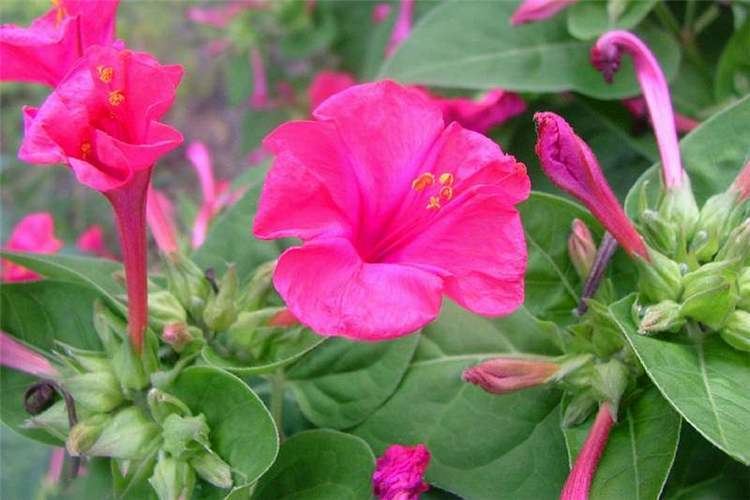 | ||
Similar Mirabilis, Nyctaginaceae, Bougainvillea, Night‑blooming jasmine, Impatiens balsamina | ||
Mirabilis jalapa 4 o clocks chandra kantha
Mirabilis jalapa, the marvel of Peru or four o'clock flower, is the most commonly grown ornamental species of Mirabilis plant, and is available in a range of colours. Mirabilis in Latin means wonderful and Jalapa is the capital of Veracruz. Mirabilis jalapa was cultivated by the Aztecs for medicinal and ornamental purposes. It is also said to have been exported from the Peruvian Andes in 1540 A.D.
Contents
- Mirabilis jalapa 4 o clocks chandra kantha
- Bonsai flowers seeds mirabilis jalapa
- Flowers and colour
- Habitat and cultivation
- Genetic studies
- Chemistry
- Uses
- Common names
- References
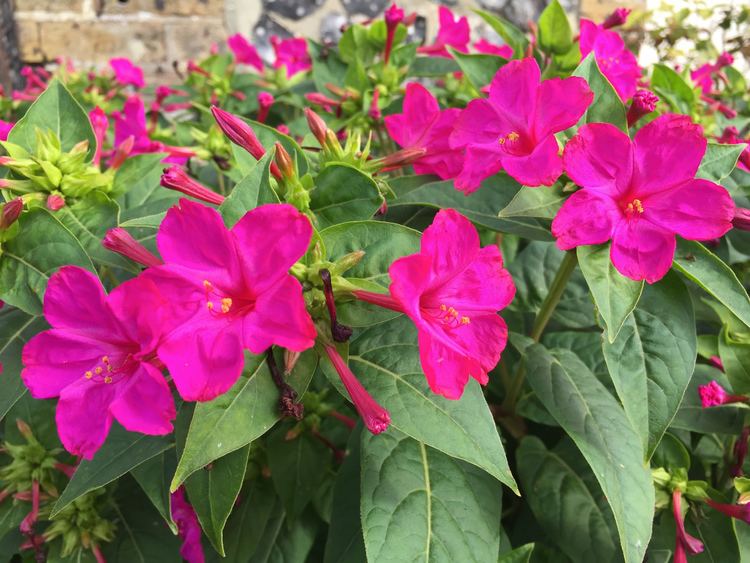
Bonsai flowers seeds mirabilis jalapa
Flowers and colour
A curious aspect of M. jalapa is that flowers with different colours grow simultaneously on the same plant.
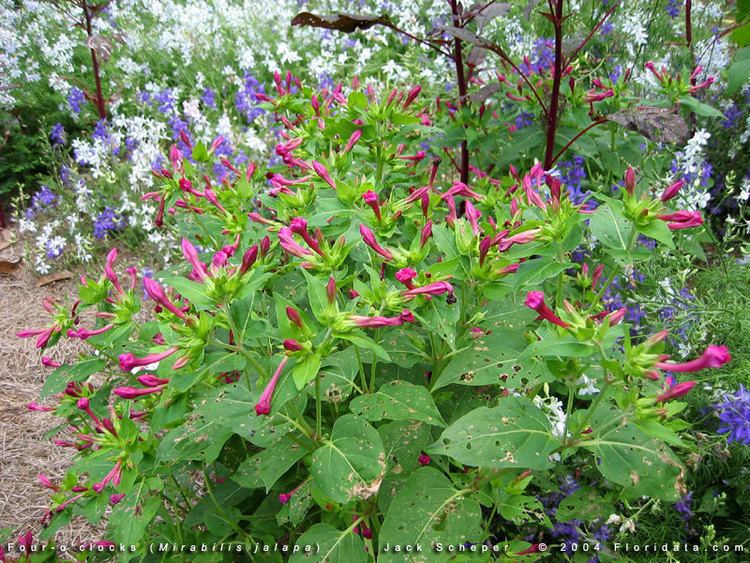
Additionally, an individual flower can be splashed with different colours. Flower patterns are referred to as sectors (whole sections of flower), flakes (stripes of varying length), and spots. A single flower can be plain yellow, pink or white, or have a combination of sectors, flakes and spots. Furthermore, different combinations of flowers and patterns can occur on different flowers of the same plant. Another interesting point is a colour-changing phenomenon. For example, in the yellow variety, as the plant matures, it can display flowers that gradually change to a dark pink colour. Similarly white flowers can change to light violet.
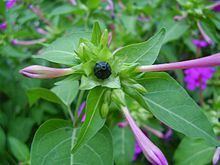
The flowers usually open from late afternoon (around 4'o clock) onwards, hence the first of its common names. Flowers then produce a strong, sweet-smelling fragrance throughout the night, then close for good in the morning. New flowers open the following day.
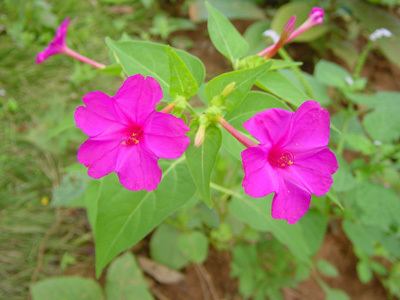
Despite their appearance, the flowers are not formed from petals – rather they are a pigmented modification of the calyx. Similarly, the 'calyx' is an involucre of bracts.
The flowers are pollinated by long-tongued moths of the Sphingidae family, such as the sphinx moths or hawk moths and other nocturnal pollinators attracted by the fragrance.
Habitat and cultivation
Mirabilis jalapa hails from tropical South America, but has become naturalised throughout tropical and warm temperate regions. In cooler temperate regions, it will die back with the first frosts, regrowing in the following spring from the tuberous roots. The plant does best in full sun. It grows to approximately 0.9 m in height. The single-seeded fruits are spherical, wrinkled and black upon maturity (see picture), having started out greenish-yellow. The plant will self-seed, often spreading rapidly if left unchecked in a garden. Some gardeners recommend that the seeds should be soaked before planting, but this is not totally necessary. In North America, the plant perennializes in warm, coastal environments, particularly in USDA Zones 9–10. The fragrance of the flower is more intense and noticeable during the warm period of the day. Usually, the flowers are found in yellow, pink and white colors but you can find different combination of flowers growing on the same single four O’ clock plant!
Genetic studies
Around 1900, Carl Correns used Mirabilis as a model organism for his studies on cytoplasmic inheritance. He used the plant's variegated leaves to prove that certain factors outside the nucleus affected phenotype in a way not explained by Mendel's theories. Correns proposed that leaf colour in Mirabilis was passed on via a uni-parental mode of inheritance.
Also, when red-flowered plants are crossed with white-flowered plants, pink-flowered offspring, not red, are produced. This is seen as an exception to Mendel's Law of Dominance, because in this case the red and white genes are of equal strength, so neither completely dominates the other. The phenomenon is known as incomplete dominance.
Chemistry
Eight betaxanthins (indicaxanthin, vulgaxanthin-I, miraxanthin-I, -II, -III, -IV, V and -VI) can be isolated from M. jalapa flowers.
Rotenoids (mirabijalone A, B, C and D, 9-O-methyl-4-hydroxyboeravinone B, boeravinone C and F, and 1,2,3,4-tetrahydro-1-methylisoquinoline-7,8-diol) can be isolated from the roots.
A fatty acid (8-hydroxyoctadeca-cis-11,14-dienoic acid) is found as a minor component in the seed oil.
Analysis of the methanolic extract of the aerial parts yields β-sitosterol, stigmasterol, ursolic acid, oleanolic acid and brassicasterol.
Bioassay-guided fractionation of an organic extract of the cell mass from a manipulated plant cell culture of M. jalapa led to the isolation and subsequent identification of an isoflavone, a roteinoid and a dehydrorotenoid, Two of these compounds are responsible for the antimicrobial activity against Candida albicans.
Bioassay-guided fractionation of the methanolic extract of M. jalapa also led to the isolation of an active polyphenolic amide: N-trans-feruloyl 4′-O-methyldopamine. This compound shows moderate activity as an efflux pump inhibitor against multidrug-resistant Staphylococcus aureus.
Uses
The flowers are used in food colouring. The leaves may be eaten cooked as well, but only as an emergency food.
An edible crimson dye is obtained from the flowers to colour cakes and jellies.
In herbal medicine, parts of the plant may be used as a diuretic, purgative, and for vulnerary (wound healing) purposes. The root is believed an aphrodisiac as well as diuretic and purgative. It is used in the treatment of dropsy.
The leaves are used to reduce inflammation. A decoction of them (mashing and boiling) is used to treat abscesses. Leaf juice may be used to treat wounds.
Powdered, the seed of some varieties is used as a cosmetic and a dye. The seeds are considered poisonous.
The plant has a potential for the bioremediation of soils polluted with moderate concentrations of heavy metals such as cadmium.
